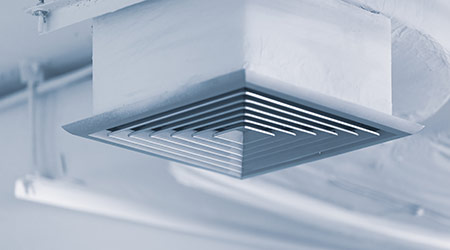Interest in the inner workings of hospitals and other healthcare facilities has never been as great as it is since the eruption of the COVID-19 pandemic. Much of the scrutiny in recent months has turned to the role of HVAC systems in preventing the spread of COVID-19. For facility managers, one of the primary challenges is rethinking and updating airflow in their buildings to protect the health of staff and patients.
Facility managers need to take a moment to consider where the air supply directly overhead comes from, according to Infection Control Today. Infectious agents or suboptimal environmental conditions, perpetuated by the air supply, will exacerbate infections.
To manage a highly transmittable disease like COVID-19, facilities have used altered airflows or, more specifically negative pressure, within their facilities to increase air exchanges and optimize fresh outdoor air.
For example, the newest design of Children’s Hospital of Philadelphia has the ability to convert two floors, three wards, and more than 150 rooms to airborne infection isolation rooms. The building management system uses software to adjust the mechanical and electrical equipment to achieve the desired results. At the request of administration and the infection control prevention team, this system can be turned on to achieve the desired airflows throughout the building.
But such measures require the necessary infrastructure. Controls, equipment, and sensors need to be installed, and building management needs to be trained. These improvements should be a future investment in public health that should not only be in hospitals but other healthcare settings, including skilled nursing facilities.
Click here to read the article.

 Grounding Healthcare Spaces in Hospitality Principles
Grounding Healthcare Spaces in Hospitality Principles UC Davis Health Selects Rudolph and Sletten for Central Utility Plant Expansion
UC Davis Health Selects Rudolph and Sletten for Central Utility Plant Expansion Cape Cod Healthcare Opens Upper 2 Floors of Edwin Barbey Patient Care Pavilion
Cape Cod Healthcare Opens Upper 2 Floors of Edwin Barbey Patient Care Pavilion Building Sustainable Healthcare for an Aging Population
Building Sustainable Healthcare for an Aging Population Froedtert ThedaCare Announces Opening of ThedaCare Medical Center-Oshkosh
Froedtert ThedaCare Announces Opening of ThedaCare Medical Center-Oshkosh